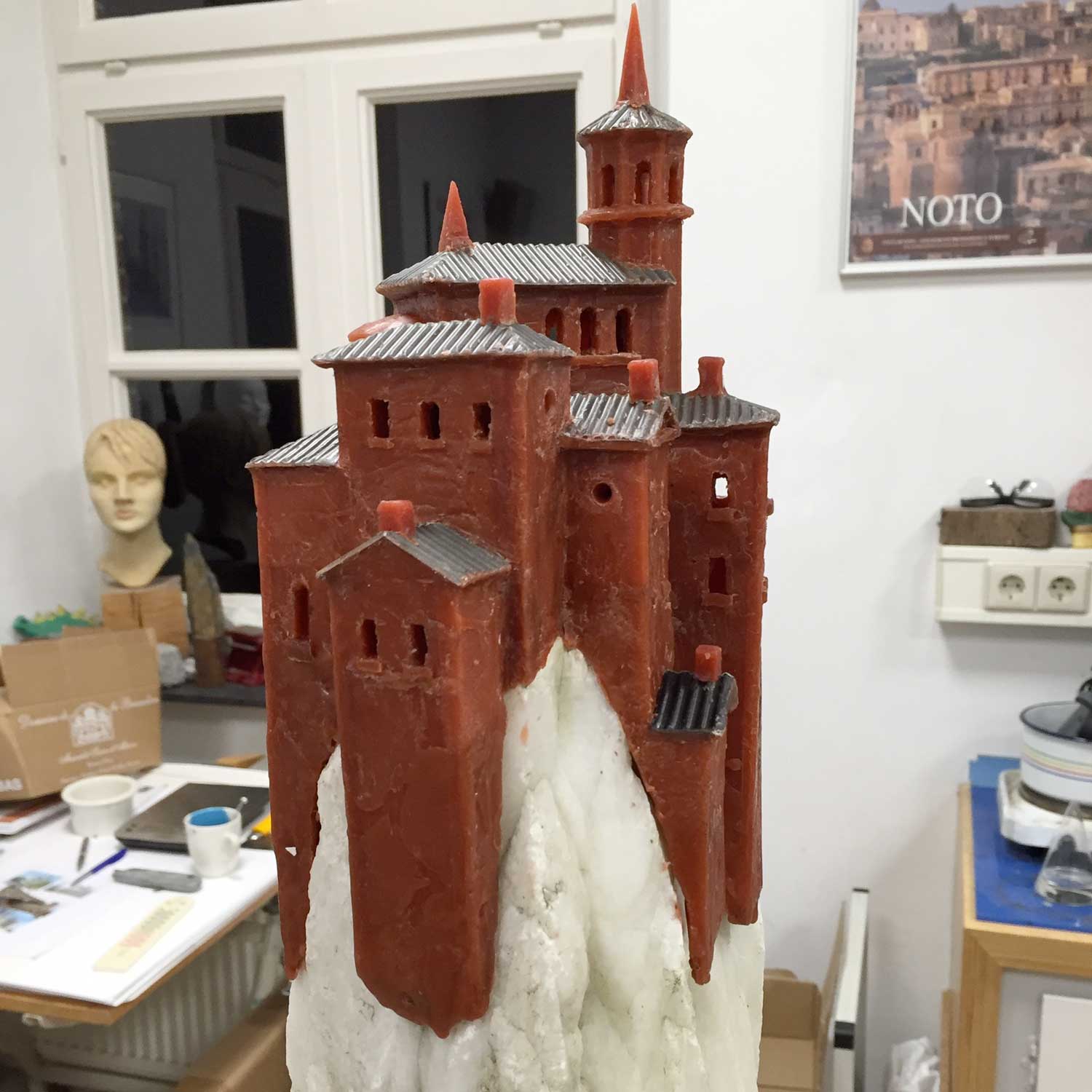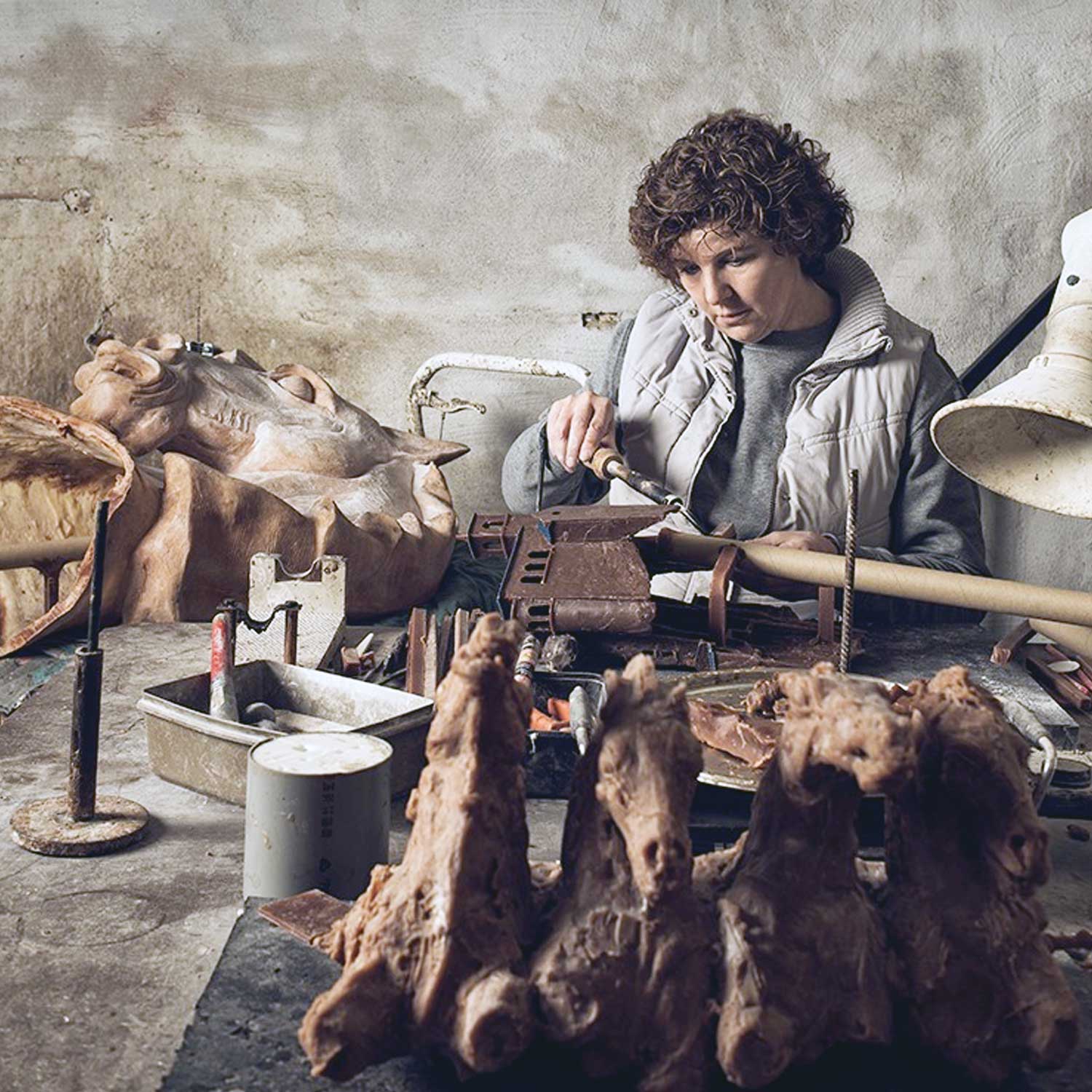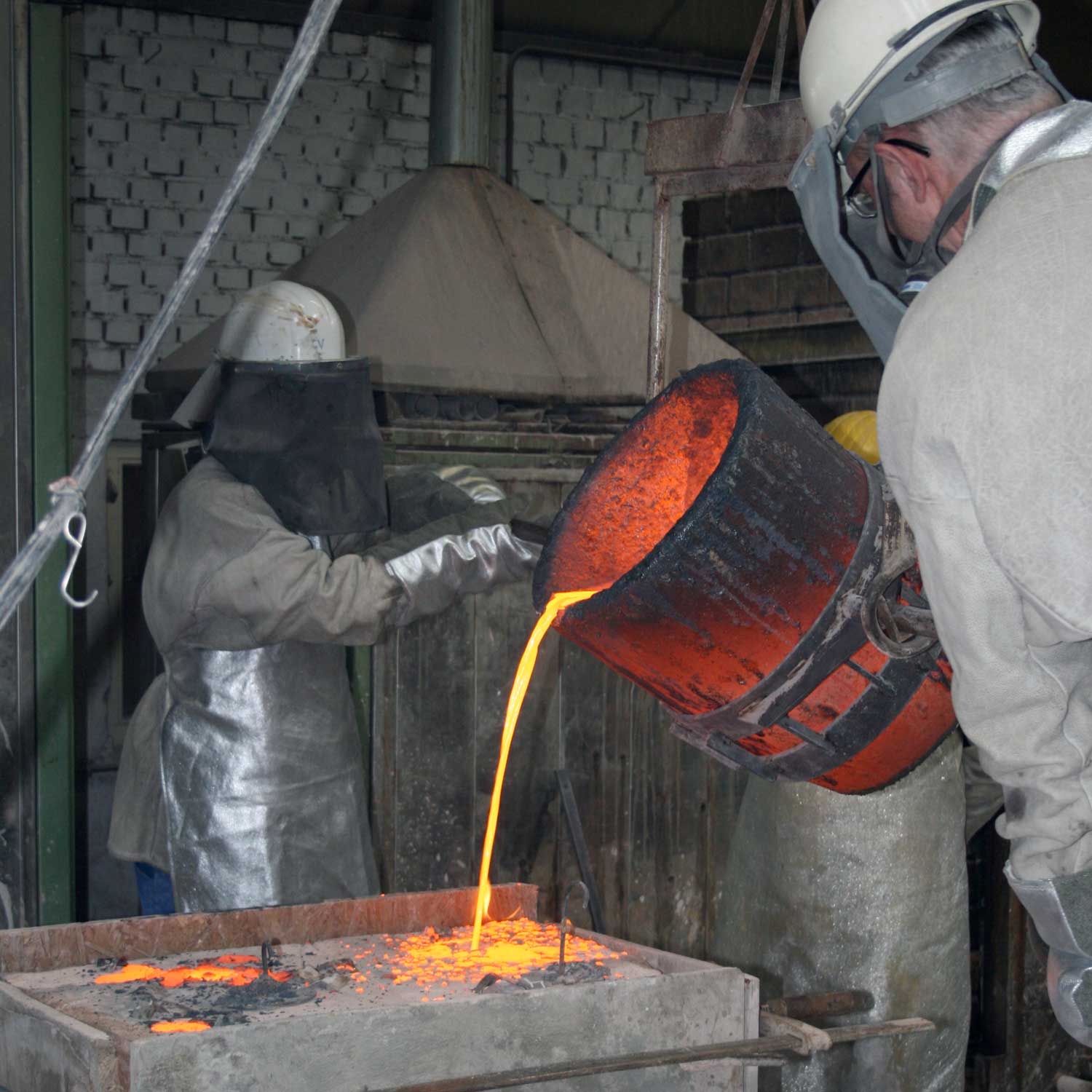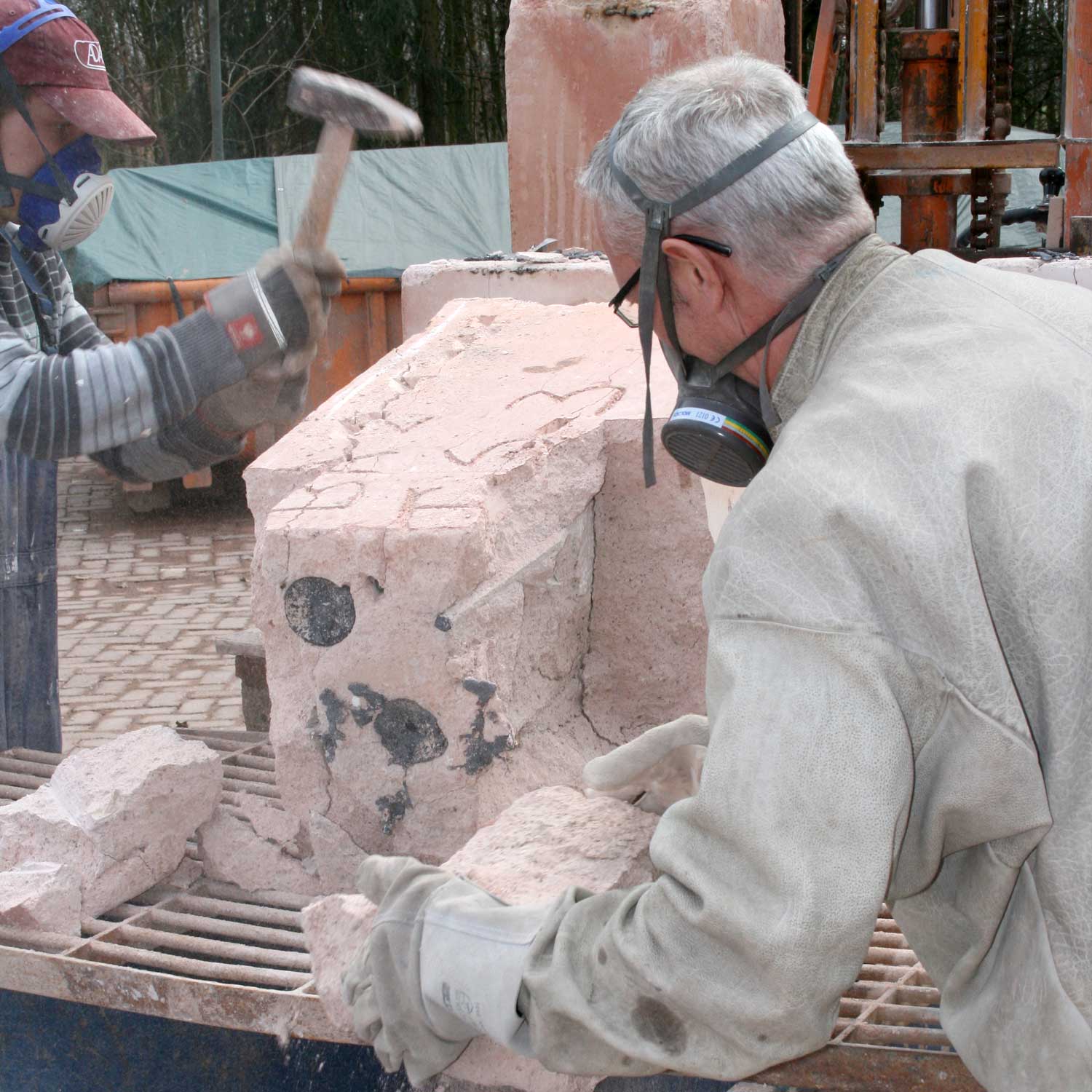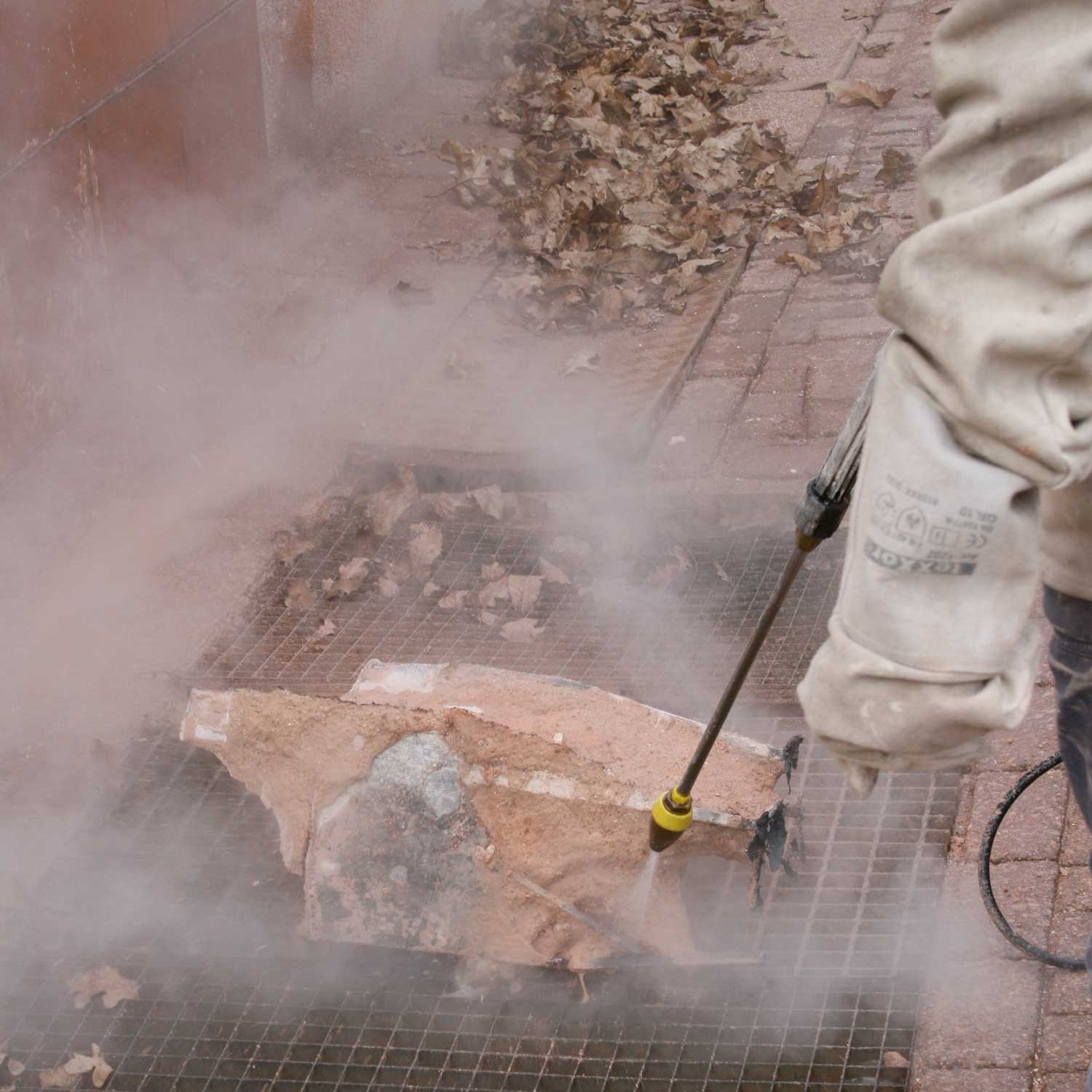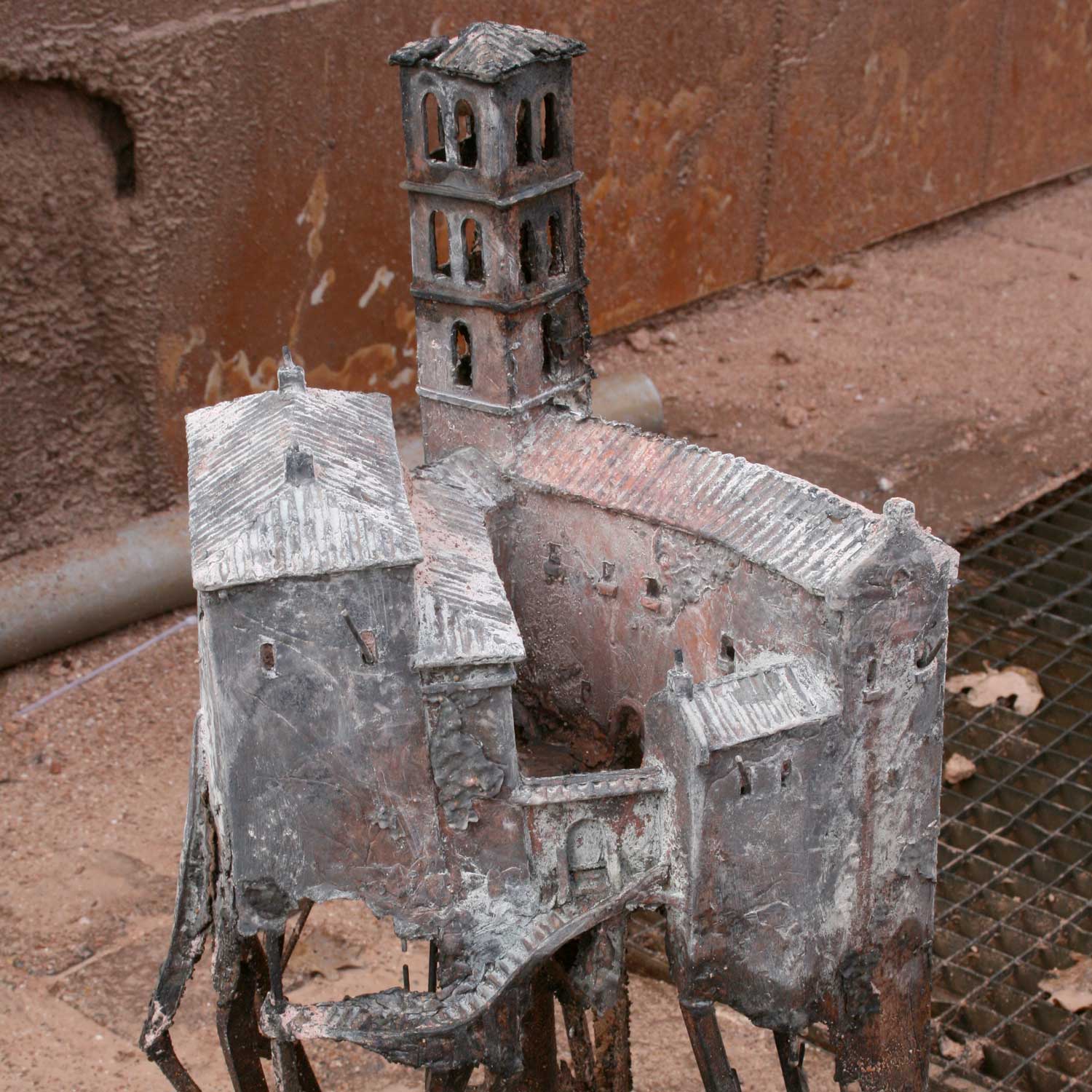Casting process
At Bronsgieterij Custers in Grathem
The sculpture with the casting and air ducts attached is ready to be put into the final mould. The plaster-soaked wax model then goes into an oven at 650 degrees Celsius, where all the wax is burned out of the mould. After cooling, it is ready for pouring in the hot bronze. After all, the sculpture and all channels are present in the mould as a hollow shape due to the burning process.
The hollow mould is carefully filled with bronze. As the photo clearly shows, the casters have to protect themselves extensively from the very hot bronze. In the crucible, the molten bronze is still at least 1100 degrees Celsius! To cope with the high force during the expansion of the casting, wooden plates with glue clamps are placed on the plaster mould.
Finishing the sculpture is another labour-intensive job. All channels have to be sawed off carefully to avoid damaging the sculpture. Wherever the attachment of a channel has been, the skin has to be touched up until this is no longer visible. Finally, the sculpture is fixed to the stone. As can be seen in the photo, the remains of the plaster cast are still visible on the sculpture’s cast skin.
